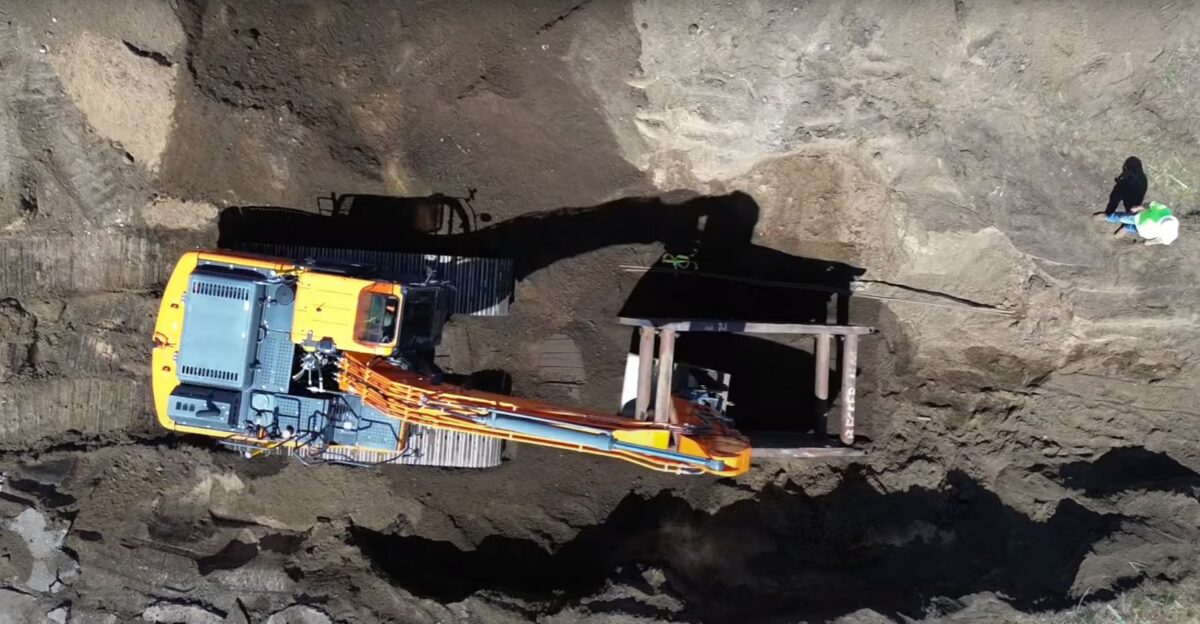Understanding Bulk Excavation in Auckland
Bulk Excavation: A Brief Overview
Bulk excavation refers to the removal of large volumes of soil, rock, or other materials from a site to reach the desired ground level or to prepare the land for construction projects. This process, typically used for constructing foundations or creating landscapes, is crucial for ensuring the structural integrity and longevity of a project.
The Step-by-Step Process
Site Assessment and Surveying
Before commencing any excavation work, a detailed site assessment is vital. This involves:
- Evaluating the type of soil and rocks present.
- Determining the groundwater level.
- Checking the vicinity for utilities like water pipes, gas lines, or electrical cables.
Planning and Marking the Excavation Area
Once the site has been surveyed:
- The excavation boundaries are marked using stakes or spray paint.
- Areas with potential hazards, such as underground utilities, are highlighted.
Choosing the Right Equipment
The type of material to be excavated determines the equipment used. Common machinery includes:
- Backhoes
- Excavators
- Bulldozers
- Dump trucks
Excavating the Material
Operating in sequential layers ensures systematic removal:
- Topsoil is usually removed first, followed by underlying material.
- For areas like Grey Lynn with its unique soil composition, special care may be needed to handle the material efficiently.
Material Transportation and Disposal Once excavated, the material:
- Is loaded onto dump trucks or other transportation.
- Is disposed of at designated sites or repurposed if feasible.
Continuous Monitoring and Safety Checks
As excavation progresses:
- Regular checks are carried out to prevent sidewall collapses.
- Ground stability is maintained, especially in areas like Remuera, known for its specific topographical challenges.
Health and Safety Considerations
Safety Gear:
All personnel should wear appropriate safety gear, including helmets, high-visibility jackets, and steel-toed boots.
Training: Only trained operators should handle the heavy machinery.
Hazard Identification: Regularly update and communicate about potential risks.
Regular Inspections: Equipment should be inspected regularly to ensure they’re in good working condition.
Alternatives to Bulk Excavation: A Comparative Glimpse
| Method | Specifications | Benefits | Disadvantages |
| Trench Excavation | Narrow, deeper cuts | Ideal for laying pipes or cables | Limited to linear projects |
| Topsoil Excavation | Removes only topsoil | Perfect for landscaping | Doesn’t reach deeper ground levels |
| Rock Excavation | Breaks and removes rocks | Needed for rocky terrains | Requires specialised equipment |
| Muck Excavation | Removes excess water and soil | Deals with muddy areas | Requires dewatering techniques |
Closing Thoughts
When considering an earthworks project in Auckland, understanding the intricacies of bulk excavation is crucial. With local challenges varying across suburbs and the technical aspects demanding expertise, trusting a professional entity like Earthmoving Auckland ensures your project’s success, safety, and compliance.
Frequently Asked Questions about Bulk Excavation
What is the difference between bulk and detailed excavation?
Bulk excavation deals with removing large volumes of material to reach the desired ground level or prepare a site for construction. Detailed excavation, on the other hand, is more intricate and is usually done after bulk excavation to create foundations or specific structures with precision.
Is there any specific permit required for bulk excavation in Auckland?
Yes, before commencing any bulk excavation work, especially in areas with specific bylaws or heritage listings, it’s essential to obtain the necessary permits from the Auckland Council. This ensures the protection of both the environment and historical sites.
How do I know how much material needs to be removed?
A detailed site assessment and survey are conducted before the excavation. This survey determines the volume of material that needs to be removed to achieve the desired ground level or depth for construction.
Are there any environmental concerns with bulk excavation?
Indeed, bulk excavation can impact the environment, particularly if not managed correctly. It’s essential to ensure minimal disruption to the local flora and fauna, prevent water table disturbances, and manage soil erosion.
How are utilities and underground services managed during excavation?
Before starting, a thorough site assessment is conducted to locate and mark utilities like gas lines, water pipes, and electrical cables. If these are within the excavation boundaries, they might need to be temporarily relocated or adequately protected to prevent damage.
What happens to the excavated material?
The fate of the excavated material depends on its composition and quality. Topsoil, for example, can be repurposed for landscaping. Other materials might be sent to designated disposal sites or used as fill in other projects, ensuring minimal wastage.
Key Takeaways on Bulk Excavation
Bulk Excavation Defined
Bulk excavation involves removing large quantities of earth materials from a site to achieve a specific ground level or depth, facilitating construction or other activities.
Site Assessment is Crucial
Before any excavation begins, a thorough site assessment ensures the identification of utilities, understanding the material composition, and establishing boundaries for excavation.
Safety is Paramount
From machinery operations to protecting workers and the public, safety protocols, including protective gear and site barricades, are non-negotiable in every excavation process.
Environmental Considerations
Protecting the environment during excavation includes managing soil erosion, safeguarding water tables, and ensuring minimal disruption to local ecosystems.
Local Challenges and Bylaws
Particular areas, like Grey Lynn and Remuera, might have specific bylaws or heritage sites that require additional considerations or permits before excavation.
Material Management Post-Excavation
The disposed or repurposed materials post-excavation are determined by their quality and composition, emphasizing minimal wastage and environmental safety.
The Need for Permits
Always ensure you have the required permissions from the Auckland Council or other regulatory bodies before commencing bulk excavation, especially in heritage or protected areas.

